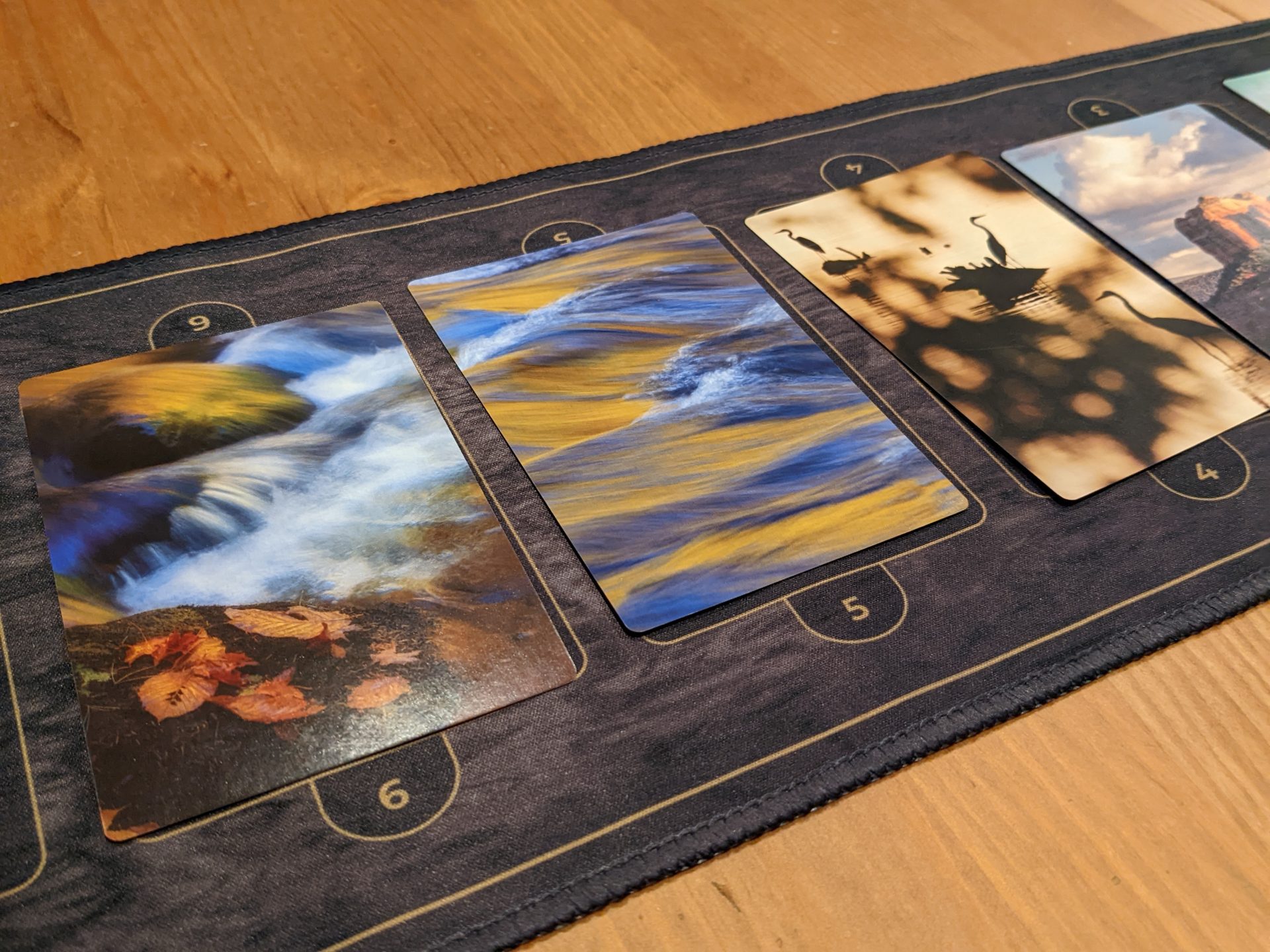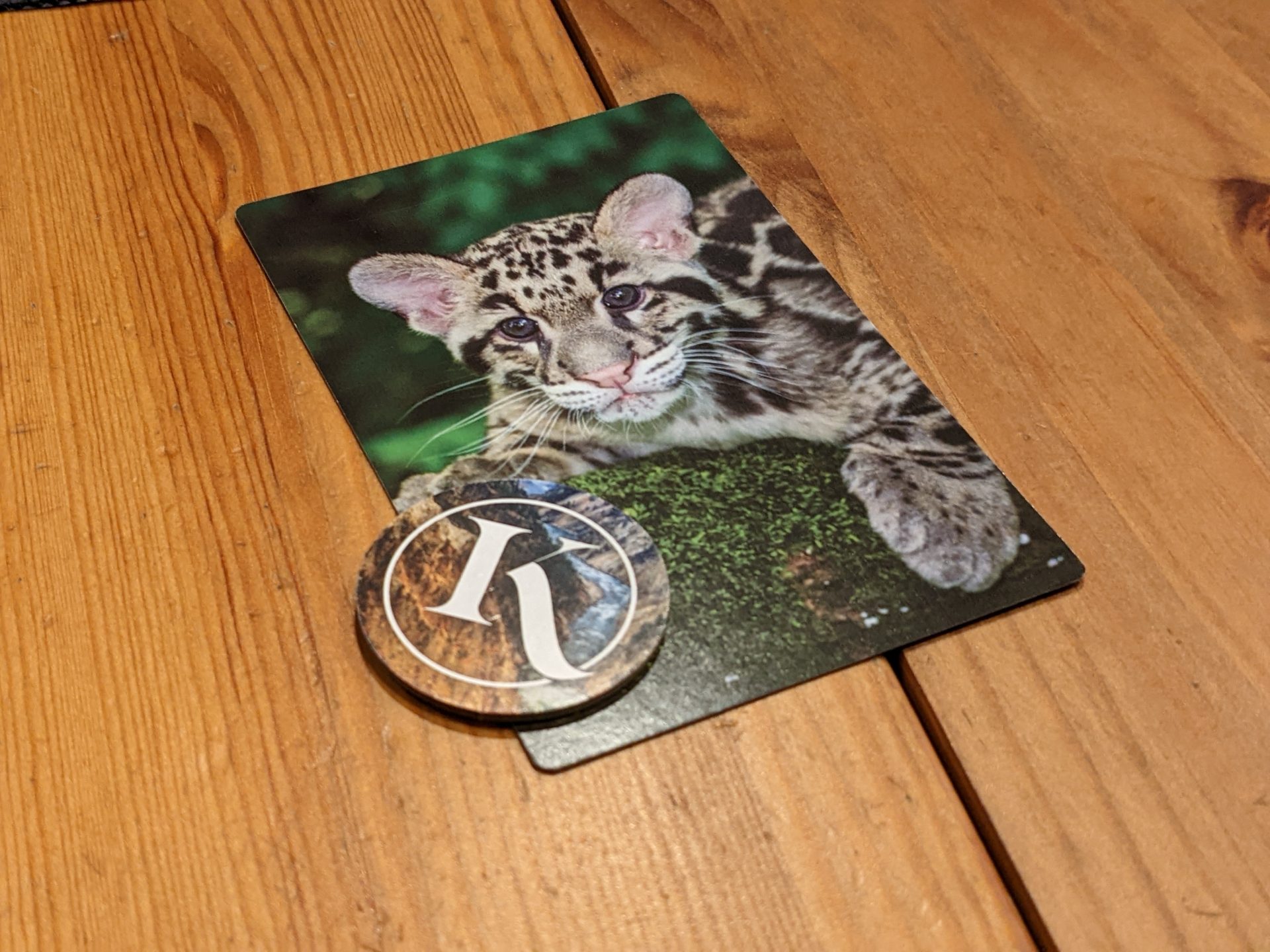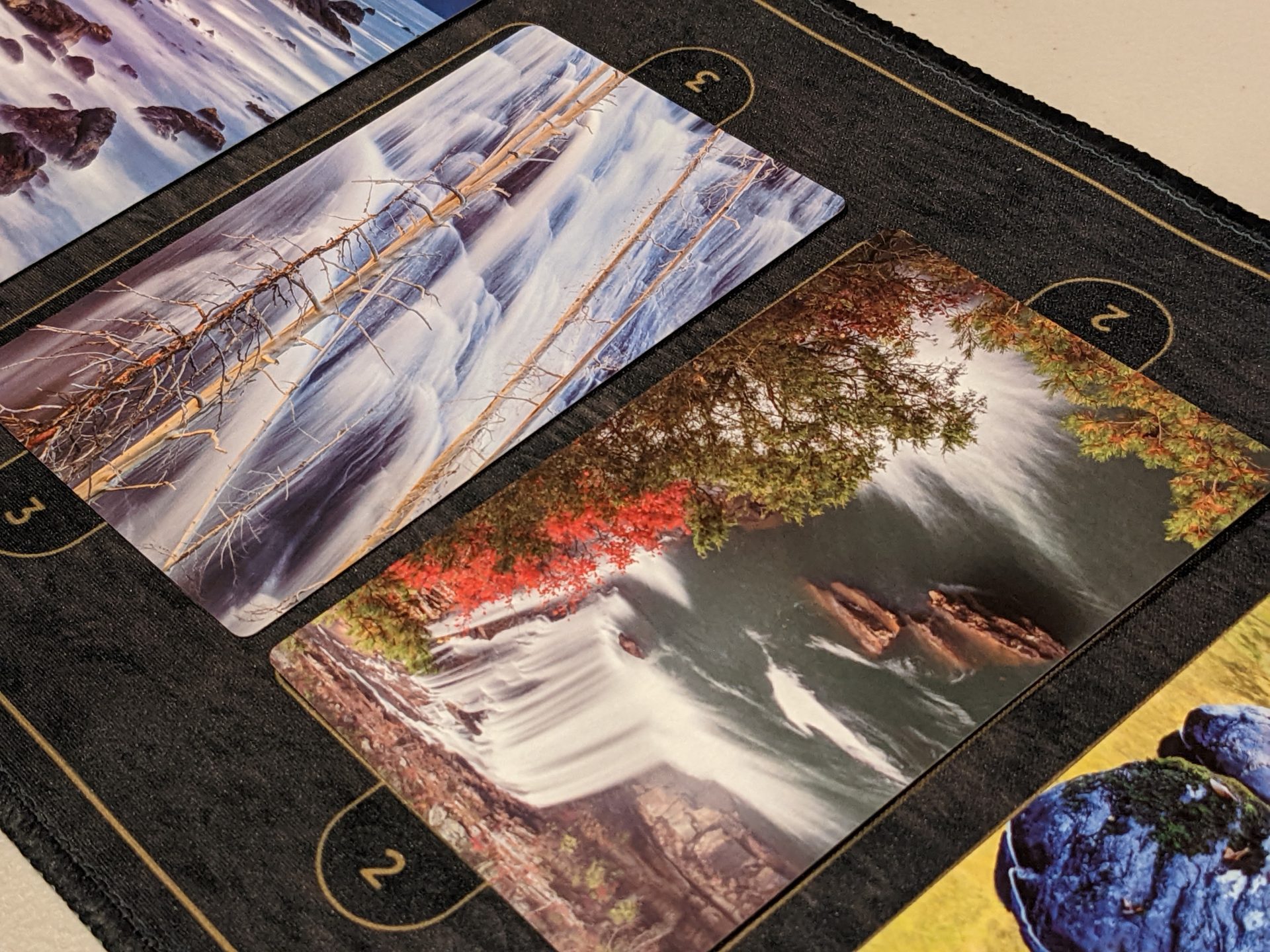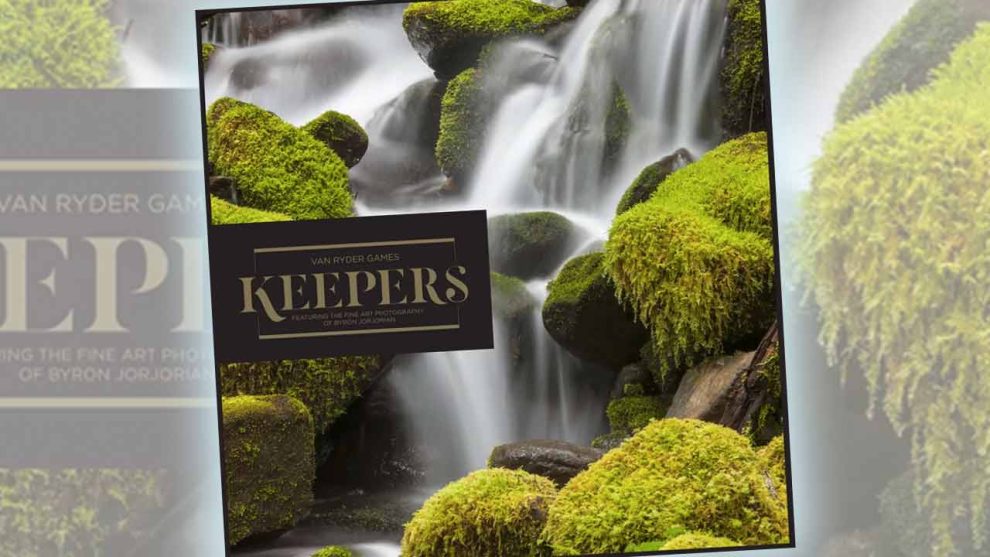Disclosure: Meeple Mountain received a free copy of this product in exchange for an honest, unbiased review. This review is not intended to be an endorsement.
My family is a huge fan of the game MonsDRAWsity. We used to play games like Cards Against Humanity and other games like Balderdash where people had to vote on the most outrageous things said, heard, drawn, or imagined at the table, with one person picking a winner.
Reading the rulebook for Keepers (Van Ryder Games, 2022), I was getting some of the vibe of the games mentioned above, but for a classier, more restrained group. With a deck of 120 cards featuring photographs by renowned photographer and Van Ryder staff member, Byron Jorjorian, Keepers elevated itself above the fray by asking players to make decisions based on beautiful pictures of nature.
But during my first game of Keepers, one of the players blurted out:
“Why does this game even exist?”
It was an interesting moment. It also spoke to why I think Keepers is a minor misstep for a certain audience of gamers, but why it is perfect for your next family vacation.

Nature, Nature, Nature
Keepers keeps it simple. Three to eight players each have a hand of 7 cards from that massive deck of 120. One player is the “Curator” and has to pick one of their cards and describe it in a single word that cannot be a noun.
(It’s important here to note that the rulebook describes this point a couple of times: the clue cannot be a noun. It has been interesting to see how many people struggled when faced with a life-or-death choice involving, say, an adjective or adverb!!)
So, a sample clue for a picture featuring a desert might be to say the word “dry.” Then, all other players submit one of their 7 cards to the center of the table. (In games with three or four players, each player submits 2 of their 7 cards, to offer more choices.) The Curator adds their card(s) to this pile, shuffles them all, then places each card in a numbered space on the provided neoprene mat.
Players then, using a handy dial that has all the numbered spaces in both green and red (with red numbers also circled, aiding with accessibility) vote for a single picture that is either the most like the clue word, or the least like it. Most like the clue? Vote with the green numbers. Least like the clue word? Vote with the red numbers. Also, players cannot vote for their own cards.
So, some players might use their vote for the picture of the desert. Some might see, say, a waterfall, and pick that picture, since that is the opposite of dry. Get it?

Votes are revealed, and the player(s) with the most votes for both the most and the least get to place their picture under their (score) Keeper token. Everyone plays as the Curator once, and the person with the most points at the end is the winner. (If that version doesn’t sound long enough for you, you can play multiple rounds instead; each game with 5-6 players takes about 10 minutes.)
The pictures by Jorjorian are beautiful, there’s no doubt about that. But, all the pictures are basically pictures of nature: animals, trees, skies, waterfalls. They are almost TOO similar, which led to an interesting problem during my plays:
You might have a hand of 7 cards (and you always draw a card at the end of the round, ensuring you maintain your hand size), but at any given time, you might have 4-5 cards that feature trees. This has happened to me multiple times. When someone uses a clue like “leafy”, “green”, or the like, that will likely describe a third of the cards in the deck.
One person dropped “skitter” (as in, a critter walking around), and it was funny to watch 4 or 5 players all place their likely only critter card on the table: a squirrel, cricket, grasshopper, etc. The person who picked the word “skitter” didn’t even score that round!
My friend Richard said it best during his second play of the game: “These cards are diminished by their proximity.” And, it’s true—there are just too many similar cards for the game to feel interesting for very long.

Dixit?
“Dixit does this too, right?”
“This feels a lot like Dixit.”
“I think I would play Dixit over this, because of the variety and abstract nature of the pictures.”
Dixit, a game I have not played but have heard plenty about, came up a lot during my plays with other gamers. Dixit doesn’t have the scoring tied to providing pictures of the opposite of a clue word, but many of the gameplay mechanics have been seen in Dixit and other games like Keepers.
This is why I will make a novel recommendation to you: play Keepers, but DON’T play it with your hobby gaming friends. Play it with your non-gaming roommates. Play it with your family over the holidays. Play it with co-workers while you are stuck in an airport waiting for your flight.
Hobby gamers will shoot this game down, as my groups did. But I can’t wait to bring Keepers with me to my in-laws trip to the beach next summer. It will also land well with my family, because it is short and has almost zero teach, while providing a fun exercise in-between meals.
The game also seems to be better with a larger group. The rules for three to four players require each player to play 2 cards from their hand, not just one, and that means you can’t vote for 2 of the cards in the display each round. Keepers seems destined to play as a large group party experience, not an evening with only two other players competing against you.
Ultimately, Keepers lines up best as a casual game for your “Muggle” friends, not hobbyists. The production is beautiful and the tarot-sized cards are really something to behold. The neoprene mat adds even more class to the experience, so kudos to Van Ryder Games (Final Girl) for nailing it again on the production elements. (The box is WAY too large for a game like this, but the insert is clearly built for expansion cards, which would be a welcome addition if they are completely different from the current nature photos.)
A mixed bag, but Keepers has a chance to shine in more casual environments.











